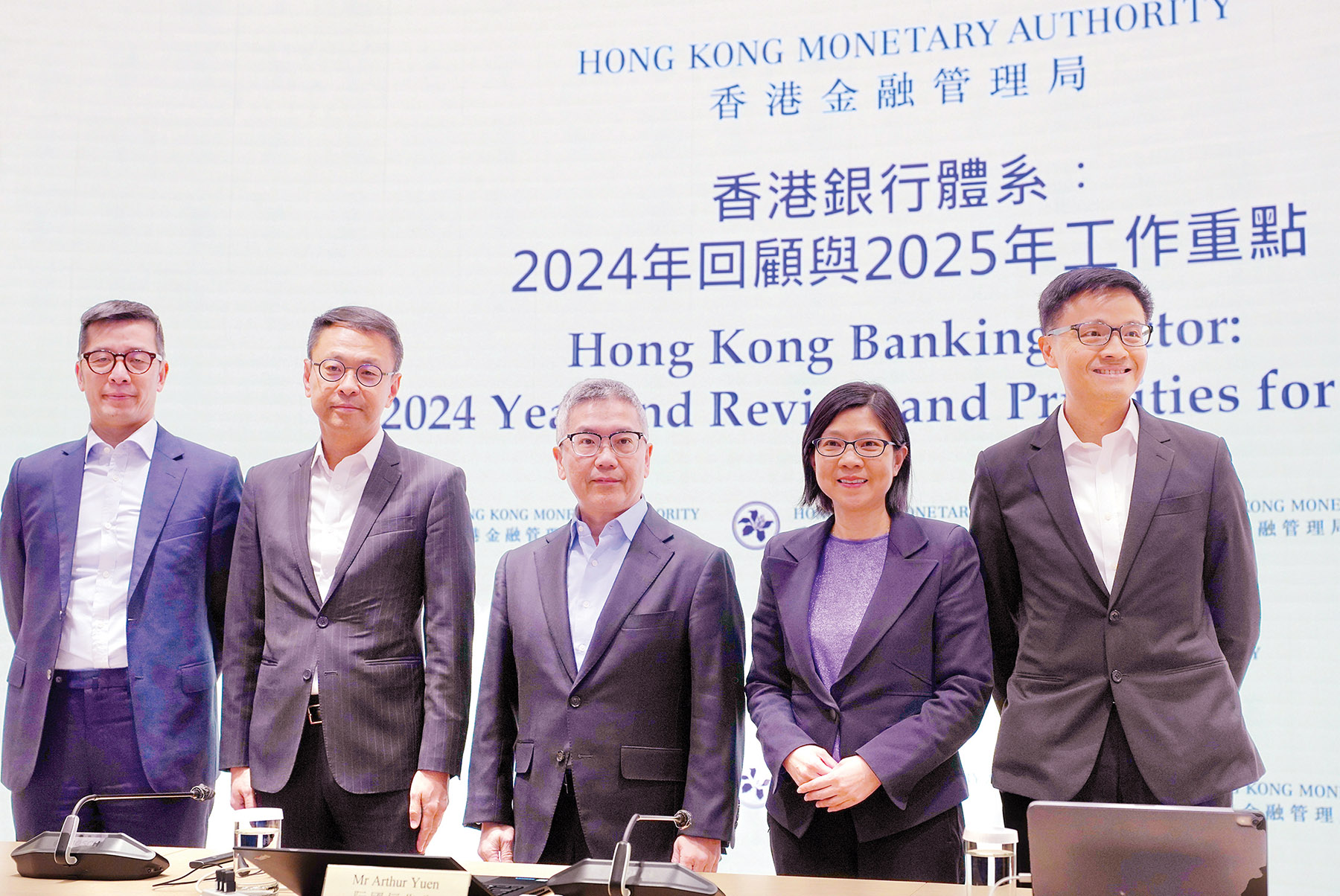
The Hong Kong Monetary Authority (HKMA) said it will ensure banks in Hong Kong maintain prudential risk management measures to prevent further declines in asset quality this year, amid heightened risks due to uncertain interest rate movements in the United States.
“The credit environment was challenging last year because of the high-interest-rate environment, and the continued financial problems of some mainland real estate developers. There has been an increase in the classified loan ratio (CLR) of all authorized institutions’ (AI) Hong Kong offices, overseas branches, and major overseas subsidiaries,” said Arthur Yuen Kwok-hang, deputy chief executive of HKMA.
At the end of September, the CLR stood at 1.99 percent, which is close to the long-run average of 2 percent. In 2023, the ratio was 1.57 percent.
READ MORE: HKMA launches five measures to support SME financing
Yuen said market pressures remain because of the challenging credit landscape amid the continually high interest rate environment, ongoing problems of some mainland property developers, and the subdued local commercial real estate market.
“The outlook for the US interest rate environment is not very clear this year after the new US government takes office. We must continue to ensure that bank credit risk management is in place,” Yuen said at the Wednesday news conference.
“There is no concentration of relevant risk exposures arising from loans related to real estate developers. We are confident that the overall risk environment is controllable as banks continue to show strong risk management capabilities that help maintain their profitability,” Yuen said.
The pre-tax operating profit of retail banks’ Hong Kong offices increased 8.4 percent during the first three quarters of 2024, compared to the surge of 62 percent for the whole 2023. The net interest margin of retail banks’ Hong Kong offices in the period was 1.5 percent, compared to 1.67 percent in 2023.
HKMA said the Hong Kong banking sector remains sound and robust with strong capital and liquidity buffers. The total capital ratio of all locally incorporated AIs at the end of September was 21.8 percent, while the liquidity coverage ratio for category one institutions was 178.4 percent in the fourth quarter of 2024.
Because of the relatively high interest-rate environment, total deposits of all authorized institutions’ Hong Kong offices in 2024 rose 7.1 percent while total loans declined 2.8 percent in the same period.
“Small and medium-sized enterprises are an important pillar of Hong Kong’s economy, but their ability to defend themselves is relatively weak, and the HKMA will ensure banks support SME operations,” Yuen said.
He added that SMEs also need to upgrade and transform, and HKMA will communicate with the banking industry to explore how banks can help SMEs in business upgrades and transformation in areas of sustainability initiatives, digitalization, or expanding the geographical scope of their business.
READ MORE: Major HK banks cut deposit, lending rates after Fed move
The HKMA deputy chief executive pledged that the city’s banking industry regulator will facilitate banks to guard against operational and technology risks so that banks in Hong Kong can maintain a high level of operational, cyber and technology resilience to detect and prevent fraud, and implement anti-scam campaigns.
More than 40,000 deception cases involving over HK$8.5 billion ($1.09 billion) were reported to the Hong Kong Police Force in the first 11 months of 2024, an increase of 8.7 percent on the previous year.
The HKMA received 828 fraud-related banking complaints last year, a drop of 31 percent from 1,201 cases in 2023.


